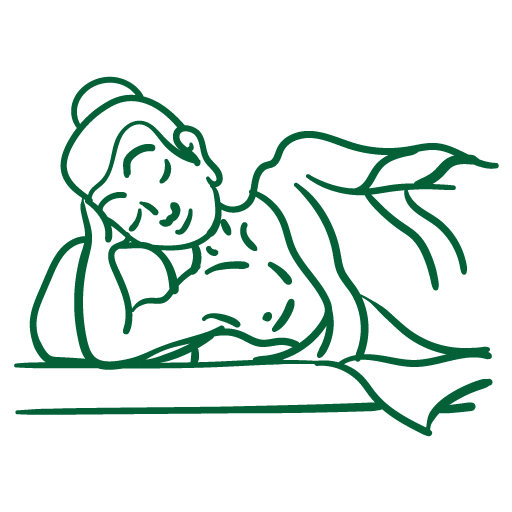Exercise is an important part of a healthy lifestyle and it is beneficial for cardiovascular health, weight control and overall well-being. However, understanding how exercise affects blood pressure is particularly crucial for people with hypertension or other heart conditions.
These are the effects of exercise on blood pressure, the duration of raised BP after exercising, what to expect during physical activity, low blood pressure after exercising as well as when to be worried about increased blood pressure.
How Does Exercise Affect Blood Pressure?
When it comes to blood pressure, exercise has both acute and chronic significant effects. The heart beats harder during physical activities in order that oxygen-rich blood may be delivered to muscles temporarily spiking high one’s BP levels. This acute rise should be expected following any activity depending on its intensity and type.
However, regular exercising has long-term positive results in controlling blood pressure. Strengthening of the cardiac muscle is done by regular exercises while flexibility of the arteries increases and this heightens efficiency of the cardiovascular system over time. Regular exercise can also help reduce resting arterial stiffness and improve circulation thereby lowering resting BP across time.
Mechanisms Behind Blood Pressure Changes During Exercise
- Increase in Cardiac Output: By increasing systolic BP this way, an increase in cardiac output (the amount of blood pumped by the heart per minute) is brought about.
- Vasodilation: When there is an expansion of blood vessels, especially those supplying muscles with oxygenated bloodstream; it becomes easier to manage such a surge in BP.
- Sympathetic Nervous System Activation: Increased HR combined with greater BP arise as a result of sympathetic nervous system arousal by exercises too.
- Hormonal Responses: Adrenaline plus norepinephrine hormones released into the bloodstream during physical activities contribute towards temporary increase in blood pressure.
How Long Is Your Blood Pressure Elevated After Exercise?
BP is not always at its normal level immediately after exercising. The higher the intensity and duration of exercise, the greater the elevation and longer it will take for BP to return to baseline levels. Additionally, a person’s fitness levels as well as general cardiovascular health should be considered.
Post-Exercise Blood Pressure Recovery
- Immediate Recovery Phase: Within minutes following exercise, blood pressure starts coming down, when heart rate slows up and body returns to resting condition. This initial drop is usually fast.
- Early Recovery Phase: During the first 30-60 minutes post-exercise, BP keeps on reducing but can still appear elevated compared with pre-exercise levels.
- Late Recovery Phase: Usually, blood pressure goes back to baseline or even lower within few hours after an individual has finished exercising. In some instances this period of recovery may last up to 24 hours especially if one was involved in severe or prolonged workout.
Individual Variations
- Fitness Level: By virtue of efficient cardiovascular adaptations that they undergo, highly trained persons demonstrate rapid recovery in BP
- Type of Exercise: Generally, aerobic exercises like running and cycling result into more persistent increase while resistance training such as weightlifting cause temporary increases only which turn into decreases over time .
- Health Status: People with hypertension or other forms of CVDs could have high blood pressure that lasts beyond exercise sessions.
How Much Should Your Blood Pressure Go Up During Exercise?
During physical activities SBP (top number) normally goes up whereas DBP (bottom number) can either remain constant or decrease slightly. The extent of this rise depends on intensity as well as certain individual characteristics.
Expected Blood Pressure Changes
- Moderate Exercise: Very dynamic exercise, can increase systolic blood pressure by 40 to 50 mm Hg or even more.
- High-Intensity Exercise: During vigorous exercise, systolic blood pressure can rise by 40 to 50 mm Hg or more.
Monitoring Blood Pressure During Exercise
- Safe Limits: Systolic blood pressure up to 220 mm Hg during exercise is considered safe for the majority. However, this limit should warrant medical evaluation when exceeded.
- Guidelines for Hypertensive Individuals: Individuals with hypertension should consult their healthcare providers for specific exercises that will best fit them and protocols to follow.
Factors Influencing Blood Pressure Response
- Exercise Type: Systolic blood pressure raises more when doing cardio activities than doing strength training.
- Exercise Duration: Longer workouts cause higher blood pressure that lasts longer.
- Environmental Conditions: Hot, moist conditions can make blood pressures go up a lot during exercising.
Can You Have Low Blood Pressure After Exercise?
While physical activity commonly leads to raised blood pressure, it can also lead to a decrease in blood pressure even during recovery. This phenomenon is known as post-exercise hypotension.
Understanding Post-Exercise Hypotension
- Mechanisms: After exercise, the vessels of the circulatory system do not narrow but instead dilate while the heart beats less often and pumps less blood through them which results in a temporary drop of the blood pressure level.
- Duration: The most dramatic reduction in postexercise hypotension takes place within an hour of termination, and this condition may last for several hours after exercise cessation.
Symptoms of Post-Exercise Hypotension
- Dizziness or Lightheadedness: Feeling dizzy or light-headed is one symptom which indicates that somebody has low B.P after exercising.
- Nausea: Since it lowers the B.P so suddenly, certain individuals might have nausea.
- Fatigue: Besides frequent yawning due to exhaustion, after post-exercise hypotension some people experience extreme tiredness or weakness.
Managing Post-Exercise Hypotension
- Hydration: Being well hydrated prior, during and after exercise can prevent a dip in blood pressure.
- Gradual Cool-Down: After exercising, having a cool-down period helps in transitioning the body gradually to rest state minimizing blood pressure changes.
- Electrolyte Balance: Consuming drinks rich in electrolytes aids in maintaining stable blood pressure levels after exercise.
When Should You Be Concerned About Elevated Blood Pressure After Exercise?
Transient rise of BP with physical activity is normal however; prolonged and excessive blood pressure high after exercise is worrisome. Monitoring such events is essential for cardiovascular health.
Warning Signs to Watch For
- Elevated for too long: When the blood pressure remains high for more than few hours after exercise, it can be indicative of some underlying problem.
- Extremely High Readings: Any measurement of systolic blood pressure above 180 mm Hg or diastolic reading over 120 mm Hg means that you should see your doctor immediately following an exercise routine.
- Associated Symptoms: Experiencing symptoms such as severe headaches, chest pain, shortness of breath, or vision changes along with hypertension requires immediate evaluation.
Risk Factors for Concern
- Pre-Existing Hypertension: Those people who have been diagnosed with high BP before.
- Family History: Increased risks of complications related to increased blood pressure are found in patients with a family history of cardiovascular disease.
- Age: Older people may have bigger variations in their blood pressure during and after exercising, compared to the young ones.
When to Seek Medical Advice
- Consistent High Readings: When you have high blood pressure every time you exercise, it is necessary to get checked by a healthcare professional.
- New or Worsening Symptoms: Prompt attention must be given to any new or aggravated symptoms accompanying raised blood pressure.
- Changes in Exercise Tolerance: Difficulty exercising and decreasing exercise capacity can indicate cardiac issues which need medical evaluation.
Conclusion
This awareness is crucial for maintaining cardiovascular health especially when it comes to understanding how physical activity affects blood pressure as well as distinguishing between normal and abnormal responses.
While short-term increases in BP during and after exercise are normal, long periods of elevated readings may show underlying issues. Regular monitoring using gradual cool downs while ensuring pee intake helps in managing BP effectively; thereby seeking appropriate medical intervention whenever required.
FAQs
Q: How long should blood pressure remain elevated after exercise?
A: Blood pressure typically begins to decrease immediately after exercise and should return to baseline or slightly below baseline levels within a few hours. In some cases, this recovery period can extend up to 24 hours, particularly after intense or prolonged exercise.
Q: Is it normal for blood pressure to be high after running?
A: Yes, it is normal for blood pressure high after running due to the increased demand on the cardiovascular system. This rise is usually temporary and should subside within a few hours post-exercise.
Q: What causes blood pressure to remain elevated after exercise?
A: Factors such as the intensity and duration of exercise, individual fitness levels, and overall cardiovascular health can influence how long blood pressure remains elevated after exercise. Persistent elevation may indicate an underlying cardiovascular issue.
Q: Can exercise cause low blood pressure?
A: Yes, exercise can lead to post-exercise hypotension, where blood pressure drops during the recovery phase. This is a normal response and typically resolves within a few hours. Staying hydrated and incorporating gradual cool-downs can help manage this.
Q: When should I be concerned about elevated blood pressure after exercise?
A: You should be concerned if blood pressure remains elevated for more than a few hours after exercise, if readings are consistently above 180/120 mm Hg, or if you experience severe symptoms such as headaches, chest pain, shortness of breath, or vision changes. Seek medical advice if these conditions occur.
By staying informed and proactive about managing blood pressure during and after exercise, individuals can take steps to reduce their risk and improve their overall cardiovascular health. Always consult with a healthcare provider for personalized advice and treatment options.










